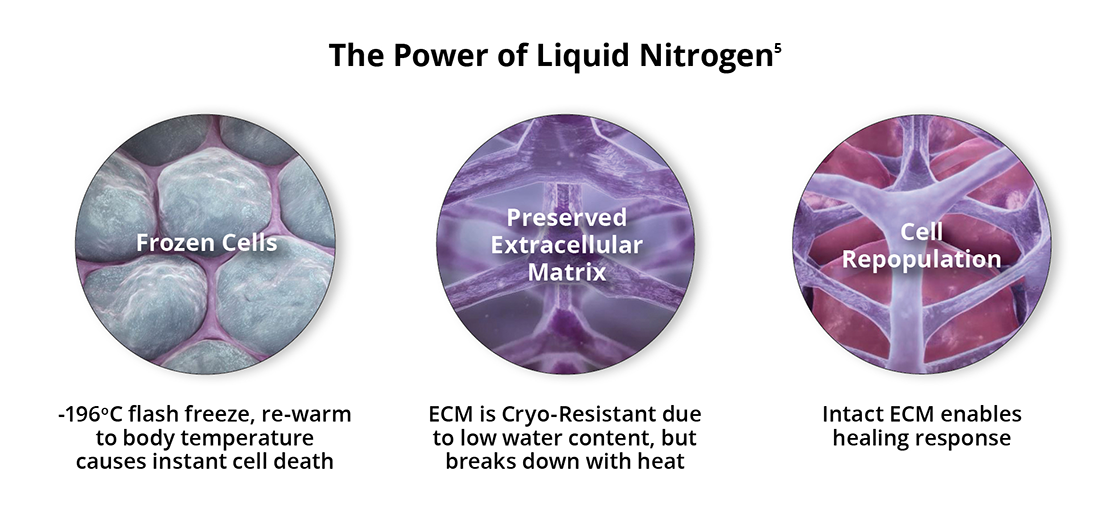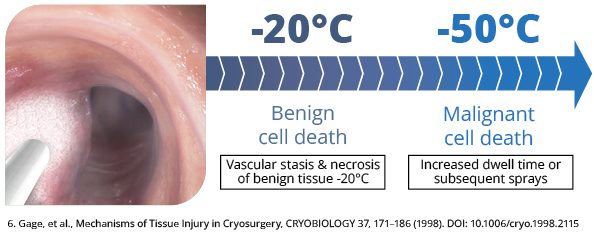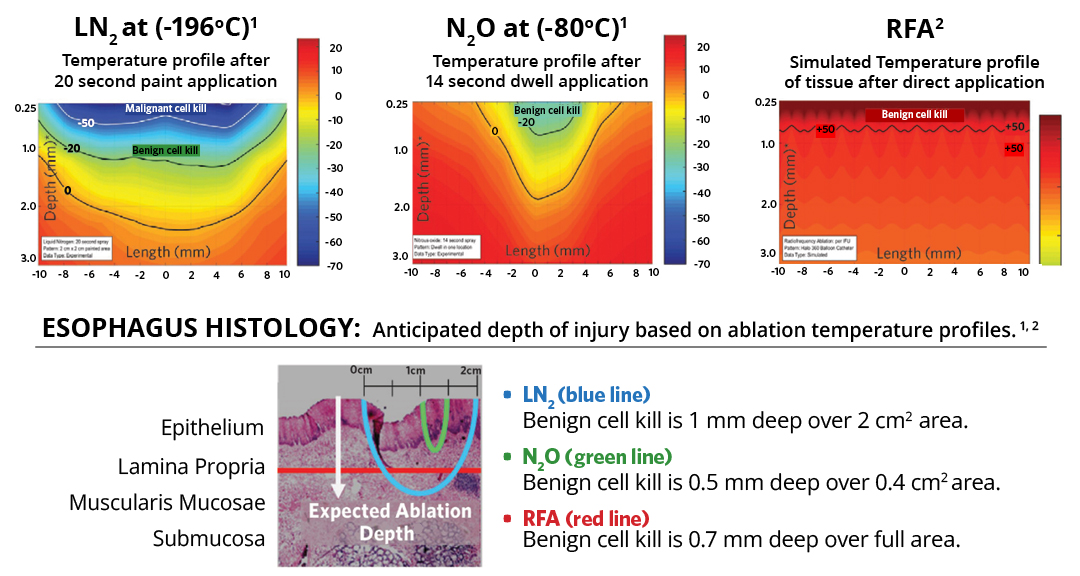
Used across multiple specialties to deliver liquid nitrogen spray cryotherapy treatments
Certificates of Analysis
Device Compatibility Matrix
Instructions Fro Use
Medivators Hookup Guide
Safety Data Sheets
Contact Form
Get a Quote or Information
Healthcare Live Chat
Locate Your STERIS Representative
![]() United States
United States
![]() Canada (EN)
Canada (EN)
![]() Canada (FR)
Canada (FR)
![]() Deutschland
Deutschland
![]() Italia
Italia
![]() United Kingdom
United Kingdom
Europe, Middle East and Africa
![]() Australia
Australia
![]() New Zealand
New Zealand
![]() Singapore
Singapore
Asia-Pacific
![]() Brasil
Brasil
![]() México
México
América Latina

|
Spray Cryotherapy for Gastrointestinal Applications |
|
Spray Cryotherapy for Pulmonary Applications |
trūFreeze spray cryotherapy uses liquid nitrogen (LN2) for the cryogenic destruction of tissue in the gastrointestinal tract and upper airway. LN2 is the coldest cryogen available and the only cryogen capable of ablating benign and malignant cells at -196˚C in the gastrointestinal (GI) tract. Spray cryotherapy is a non-contact ablation technology that traps and flash-freezes water in cells, causing cell death while preserving the extracellular matrix and promoting a rejuvenating healing response. Because freezing, unlike heat therapies, does not burn tissue, the underlying cell structure is preserved, and new tissue will regrow where the diseased tissue has been frozen and sloughed off with medical freeze spray, leaving little to no scarring.
Expand the Continuum of Care for your patients by offering trūFreeze cryotherapy as a treatment option.
Spray cryotherapy is a minimally invasive procedure that delivers extremely cold liquid nitrogen through a small catheter to flash-freeze benign or malignant cells in the airway or gastrointestinal tract. The specialized spray catheter is entered through a scope to spray liquid nitrogen on the affected tissue. After the tissue is frozen for a short time, the tissue is allowed to thaw naturally. This freeze/thaw cycle can be repeated to help destroy targeted cells without disturbing the extra-cellular matrix. This method produces low scarring compared to traditional heat-based ablation therapies such as Radiofrequency ablation or Argon Plasma Coagulation.

By taking advantage of liquid nitrogen's unique cryogenic properties, the trūFreeze system is the only cryogen device indicated to ablate Barrett's Esophagus with high-grade dysplasia or low-grade dysplasia and also to ablate malignancies, such as esophageal cancers.

The extremely cold nature of LN2 spray cryotherapy enables the ablation of benign and malignant lesions. LN2 cryotherapy is a diversified interventional therapeutic option for clinicians used to manage the symptoms of early and late-stage cancers in the gastrointestinal tract and airway. trūFreeze Cryotherapy is a life-changing GI intervention for esophageal cancer patients and can prevent or delay stent placement in these patients.
"Everything we do revolves around food. When patients lose the ability to eat, they lose a great source of pleasure and social connection with family and friends. I offer trūFreeze cryotherapy to my patients because it helps improve their swallowing, quality of life, and social functioning with minimal side effects. It gives them back some of the life that cancer has taken away."
Toufic Kachaamy, M.D.
Interventional Program Specialist and Chief of Medicine,
City of Hope – Phoenix, AZ

The non-contact nature of trūFreeze cryotherapy enables the ablation of benign and malignant tissue with complete coverage for various shapes, sizes, and nodularities in even the most challenging anatomical locations and retroflex.


The trūFreeze system was well-tolerated in several peer-reviewed studies with a low pain and side-effect profile.
"We see a clear reduction in post-procedural pain and increased toleration with trūFreeze cryotherapy in our large patient population as compared to other modalities of ablation for Barrett’s esophagus and cancer, which allows us to improve the patient experience."
Neil R. Sharma, M.D.
President, Parkview Cancer Institute,
Chair, Upper GI Tumor Site Team Program Director Advanced Interventional Endoscopy Fellowship Parkview,
Director, Interventional Oncology & Surgical Endoscopy programs (IOSE),
Assistant Professor of Medicine, Indiana University


Used across multiple specialties to deliver liquid nitrogen spray cryotherapy treatments

Designed to deliver liquid nitrogen to the gastrointestinal tract

Designed to deliver liquid nitrogen for airway disease and pulmonary applications

Spray cryotherapy can ablate benign and malignant esophageal diseases such as esophageal cancer, strictures, and Barrett’s Esophagus.

Spray cryotherapy can be used in the pulmonary system to treat diseases within the central airways and lungs, including obstructions caused by benign or malignant tissue.

Interventional therapies like spray cryotherapy are used as an adjunctive treatment in patients on systemic therapy to improve quality of life through dysphagia relief and improved airway patency.
References
1 Based upon internal test fixture data using tissue mimetic.
2 Based upon internal simulations.
3 Solomon Sanjeev, Kothari Shivangi, Smallfield George, et al. Liquid Nitrogen Spray Cryotherapy is Associated with Less Postprocedural Pain than Radiofrequency Ablation in Barrett’s Esophagus A Multicenter Prospective Study. Journal of Clinical Gastroenterology. 2019 Feb; 53 (2):e84-e90. DOI: 10.1097/MCG.0000000000000999
4 AN ENDOSCOPIC ONCOLOGY GUIDE to Cryotherapy in the Upper GI Tract
5 Yiu, et. al., "Cryosurgery: A Review." Int J Angiol 2007; Vol. 16, pp 1-6. https://www.ncbi.nlm.nih.gov/pmc/articles/PMC2732998/pdf/ija16001.pdf
6 Gage, et al., Mechanisms of Tissue Injury in Cryosurgery, CRYOBIOLOGY 37, 171–186 (1998). DOI: 10.1006/cryo.1998.2115